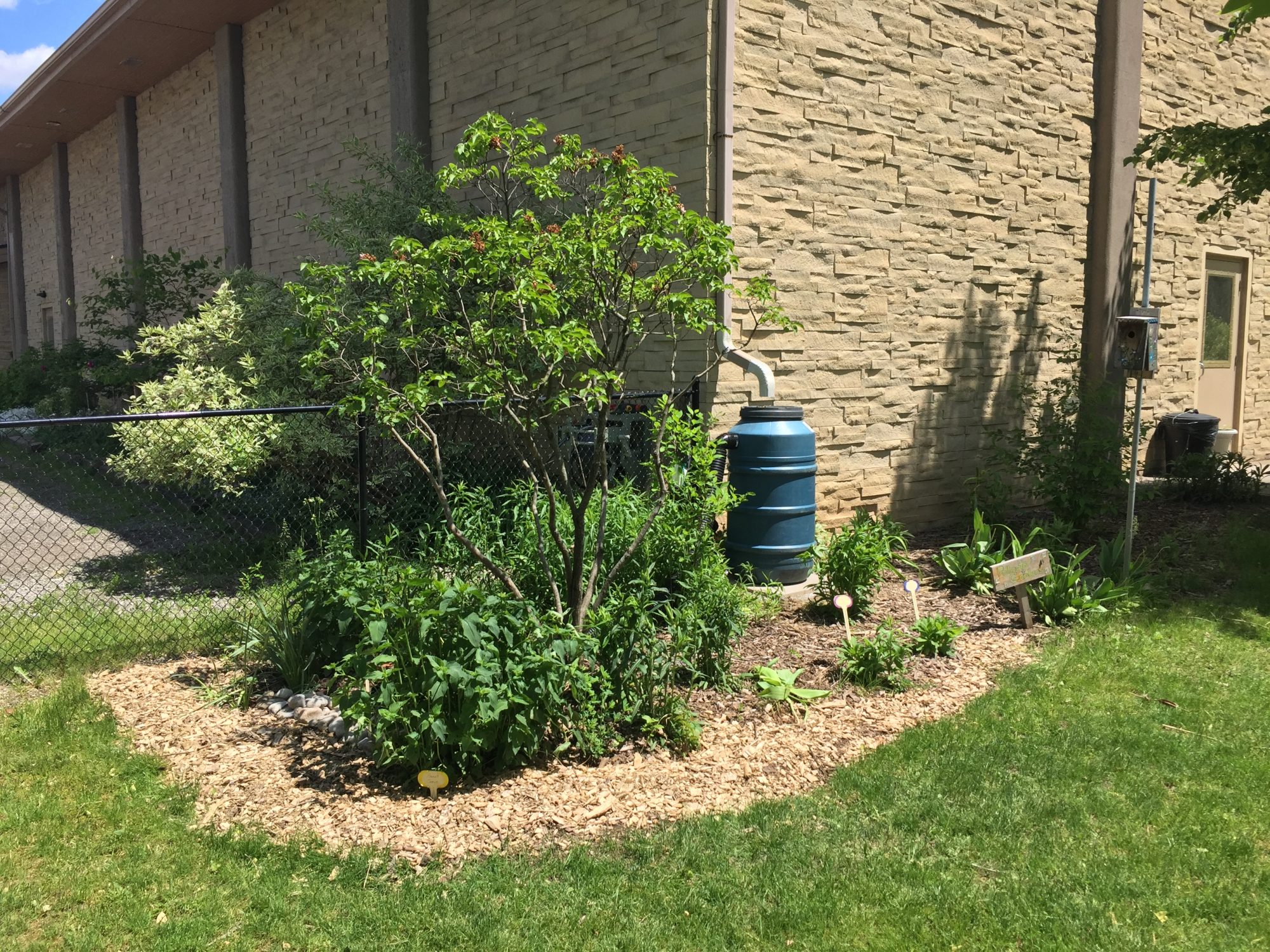We live in one of the fastest-growing urban areas in Canada. It’s great to be part of such a vibrant community, especially as a business, but we need to do our part to reduce our impact on the environment. There are many ways a commercial landowner can implement small and large projects on their property to support the natural function of the environment.
To determine projects that would benefit the natural features on your property, please complete our Landowner Inquiry Form.

Lawns and gardens can require a large amount of time, effort and money to maintain, but there are easy ways to turn your country yard into a low-maintenance, drought-resistant garden using native plant species that will look beautiful and attract pollinators.
What you can do:
- Use dead leaves as garden mulch to prevent weeds and keep moisture in the soil
- Compost your kitchen and garden waste and spread it in the garden for healthy soil
- Allow your lawn to brown in the summer and keep grass height at 5 cm to maintain shade and reduce evaporation
- Plant native species of trees, shrub and flowers that are tolerant to drought
- Choose a variety of shapes and colours of native flowering plants to attract a diverse variety of pollinators
- Select plants that flower and produce nectar at different times throughout the season to support a diverse variety of pollinators
- Plant the garden in groups or “clumps” to better attract pollinators
- Improve the drought resistance of your plants by watering less often to encourage them to grow deeper roots
- Water your garden with rainwater or install a drip irrigation system from rain barrels
- Water plants in the early morning or evening to reduce evaporation
- Adapt your garden to be pesticide-free or use ecological alternatives
- Learn how to identify invasive species and remove them from your property
Descriptions of these projects and guidelines for eligibility can be found in the Commercial Properties Guidelines for the Water Quality and Habitat Improvement Program.
In a natural environment, rainwater returns to the ground, where it is filtered and becomes available for plants and animals. As our urban environments expand, the amount of impervious surface, such as driveways, sidewalks, rooftops, and compacted soil, is increased. In cities, more than half of rainwater runs off of impervious surfaces and into storm sewers or ditches. As the water runs over these surfaces, it picks up oil, salt, litter and pet waste. This unfiltered urban runoff causes erosion, increased amounts of sediment, changes to water temperature and loss of fish habitat.
What can you do?
The best way to manage rainwater on your property is to send it back into the ground by directing downspouts to the lawn or garden. This will not only prevent surface runoff, but it will also reduce the amount needed for watering the garden or lawn and provide the soil with water of a higher quality. Rainwater is better for gardens because it is free of salts and pollutants, it does not contain chlorine and its temperature and pH are favorable to plants.
If there is often too much water on your property, you should considering using Low Impact Development (LID) to deal with rainwater where it falls, before it reaches impervious surfaces. LID features mimic the natural water cycle by infiltrating water back into the ground. LID can range from simple rain gardens or soakaway pits to permeable driveways or bioswales. LID design is cost-effective and can provides solutions for properties of all sizes, including those which are very small.
Descriptions of these projects and guidelines for eligibility can be found in the Commercial Properties Guidelines for the Water Quality and Habitat Improvement Program.
Conservation Halton offers a program to reduce the cost of rainwater conservation projects. Click here to learn more about financial assistance programs.
We also offer workshops to business owners, property managers and their employees. These workshops are run by experts in green infrastructure and stormwater management. Workshops can be virtual or in person, and can be anywhere from 45 minutes to a full day.
If you are interested in learning more about workshops for your business, you can email us at stewardship@hrca.on.ca
Forests are important for the health of everyone in the watershed—they remove pollution from the air, filter water before it enters our creeks, streams, river and lakes, shelter the land from wind and water erosion, provide habitat for native species of wildlife and store carbon for climate resilience.
If you have a forest or woodlot on your property, there are resources and programs to manage, maintain and enhance the health of your forest. Whether your objectives are habitat for wildlife, opportunities for recreation or income generation, there are best management practices you can implement to maximize your forest.
What you can do:
- Expand the forested area on your property by planting native trees and shrubs.
- Learn how to identify invasive species and remove them from your property.
- Join the Ontario Woodlot Association to learn from other woodland owners.
- Create a “Stewardship Plan” and you could be eligible for the Managed Forest Tax Incentive Program.
Descriptions of these projects and guidelines for eligibility can be found in the Commercial Properties Guidelines for the Water Quality and Habitat Improvement Program.
If you are interested in a project to support forest health on your property, please complete our Landowner Inquiry Form to get in touch with a Landowner Outreach Technician.